An overview of architectural cladding and materials
Cladding /klædıŋ/ a covering or coating on a structure or material, etc. (Oxford English Reference, 1996). One type of cladding, or siding as they say in the USA, starred as the theme of the 1987 movie Tin Men, also starring Danny DeVito and Richard Dreyfuss. Set in the 1960s, at the height of America’s post war building prosperity, rival salesmen use skullduggery to close sales on aluminum sidings. These characters are as passionate about their product as closing their deals.
No doubt there is still healthy competition in markets today where there are also a lot more types of cladding and choices of coatings available for residential sidings and the construction industry. It’s worth having a look at the evolution of cladding and to consider its uses and finishes.
Early Days
We love our comforts and have, globally, long sought protection from the elements in the way of shelter; cladding them with sticks or mud to protect against the weather. We have, however, moved on from seeking protection from the elements and wild beasts to also seeking protection from bad elements within society; though some societies may still rely on lean-to dwellings and aspire to the brick and stone we take for granted in more developed nations.
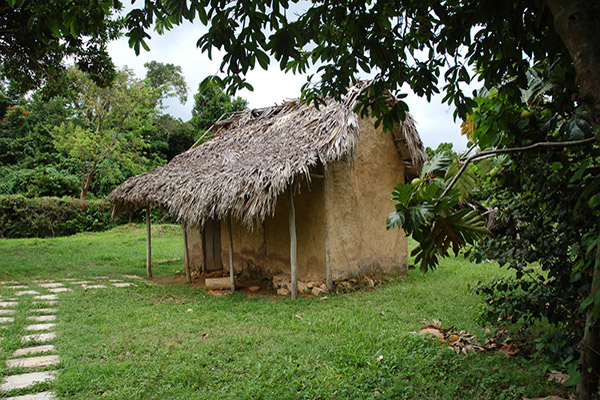
A replica of an early British Cruck house with thatch roof and wattle and daub coating to the walls
The Industrial Revolution witnessed momentous construction evolution as wrought iron evolved from cast iron and allowed long lengths of metal to be manufactured. Extruded metals lead to extensive use of corrugated iron for roofs as well as sidings. The nuts and bolts that held these together were soon replaced with rivets allowing structures to be assembled in no time. Methods improved to guard against rain, drafts, humidity; while providing light, ventilation and sound proofing.
Early metal framed structures of the industrial revolution tended to be hidden and their intrinsic aesthetic was clad with timber. Nowadays the stick-framed aluminium mullions and transoms of structures are often visible where cladding is designed to form an integral part of the design of the external fabric of a building.
It’s important to remember however that such cladding systems are non-loadbearing but must be able to withstand and to transfer the forces of nature to the structure they are fixed to.
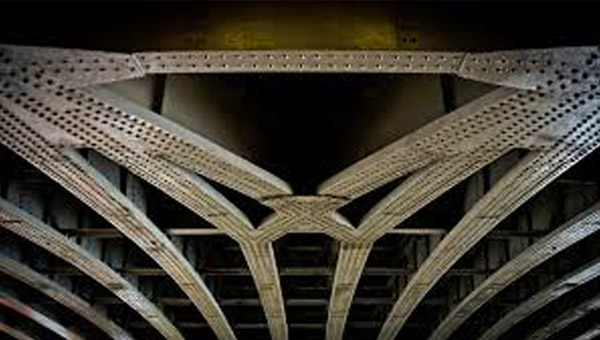
Riveted iron at Blackfriars railway bridge, London, UK
Overcladding
A form of cladding known as overcladding can give an injection of life to a structure where weathering, age and defects have contributed to the degeneration of the external fabric of a building. This system provides a ventilated rain-screen which uses the existing structure as an air barrier. Overcladding saves the cost of a new-build while providing new insulation. Furthermore, it protects and reduces maintenance costs of the original building fabric. Overcladding is suited to an array of finishes including metal finishes which provides a structure with a new façade and appearance.
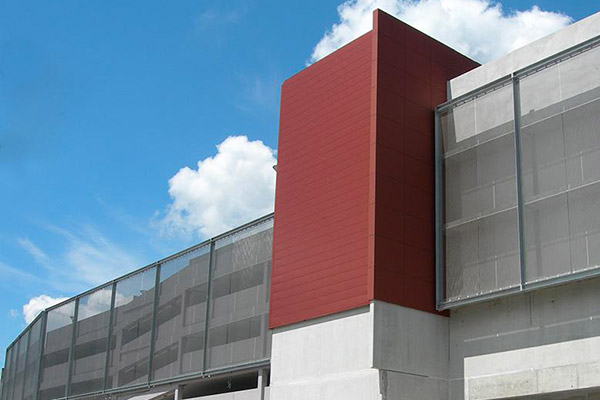
Renovated multi-storey car park using stainless steel mesh cladding by Haver & Boecker, Moulins, France
Finishes
Today, metal framed buildings with exterior cladding are the norm for modern high rise buildings across the world where it provides aesthetic finish as well as protection. For exteriors, cladding comes in many pre-cast materials including pre-cast concrete, stone veneers, brick, glazing, metal panels and over-cladding.
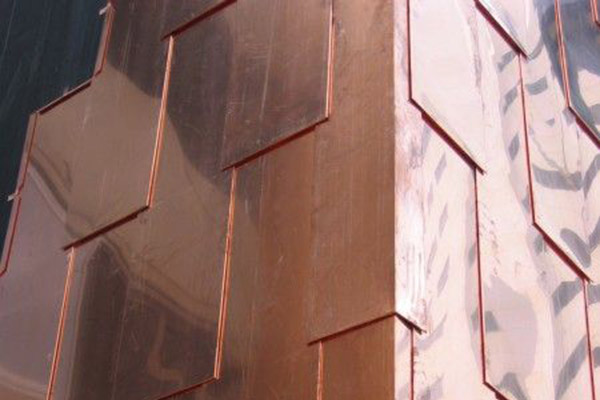
Copper shingles used as cladding on this Project by Arc Roofing, Australia
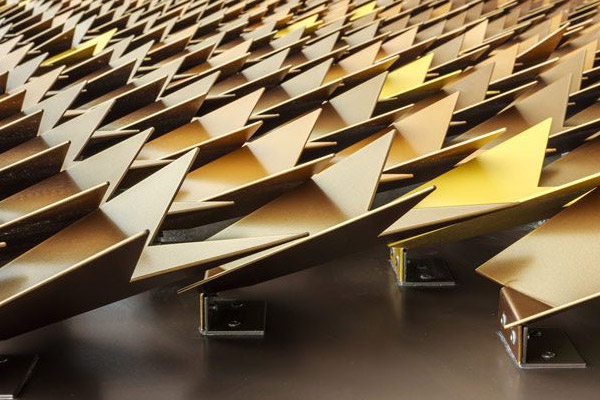
Bronze “leaves” form a cladding on this Mayfair (London, UK) house designed by Squire & Partners Architects.
Cladding is also used as decorative interior finishes on walls and ceilings within commercial and residential buildings. These finishes may be anything from painted or varnished timber panelling and veneers to metal composites.
Additionally, architects and designers are using stainless steel, including Corten and PVD coated coloured stainless steel as cladding and panels for exterior and exterior use.
Not only are metal finishes used for the cladding panels themselves but are also used for the finishes of the fixings which comprise key elements of performance as well as being aesthetically pleasing.